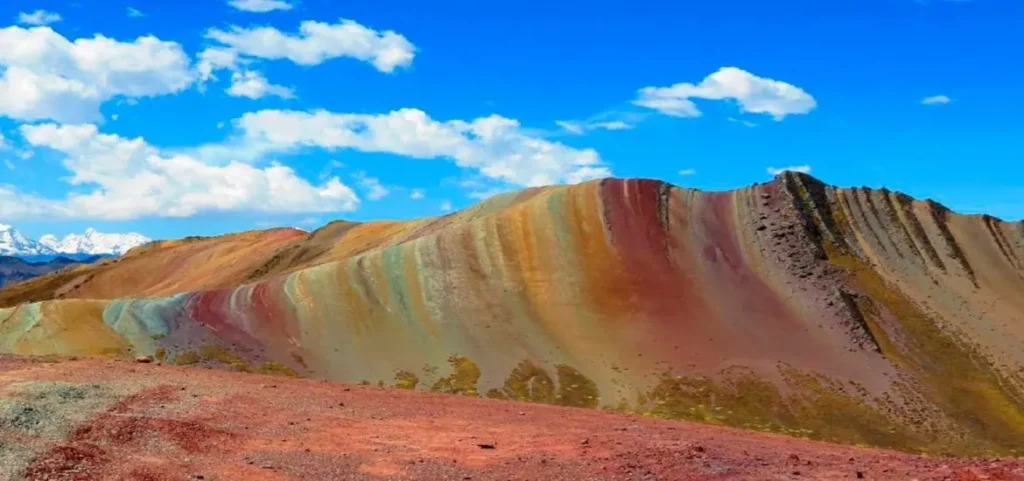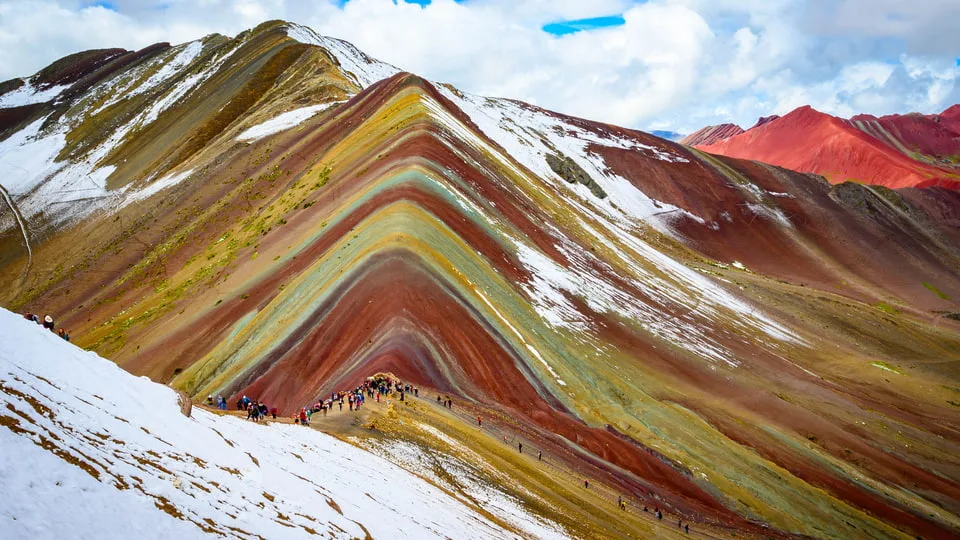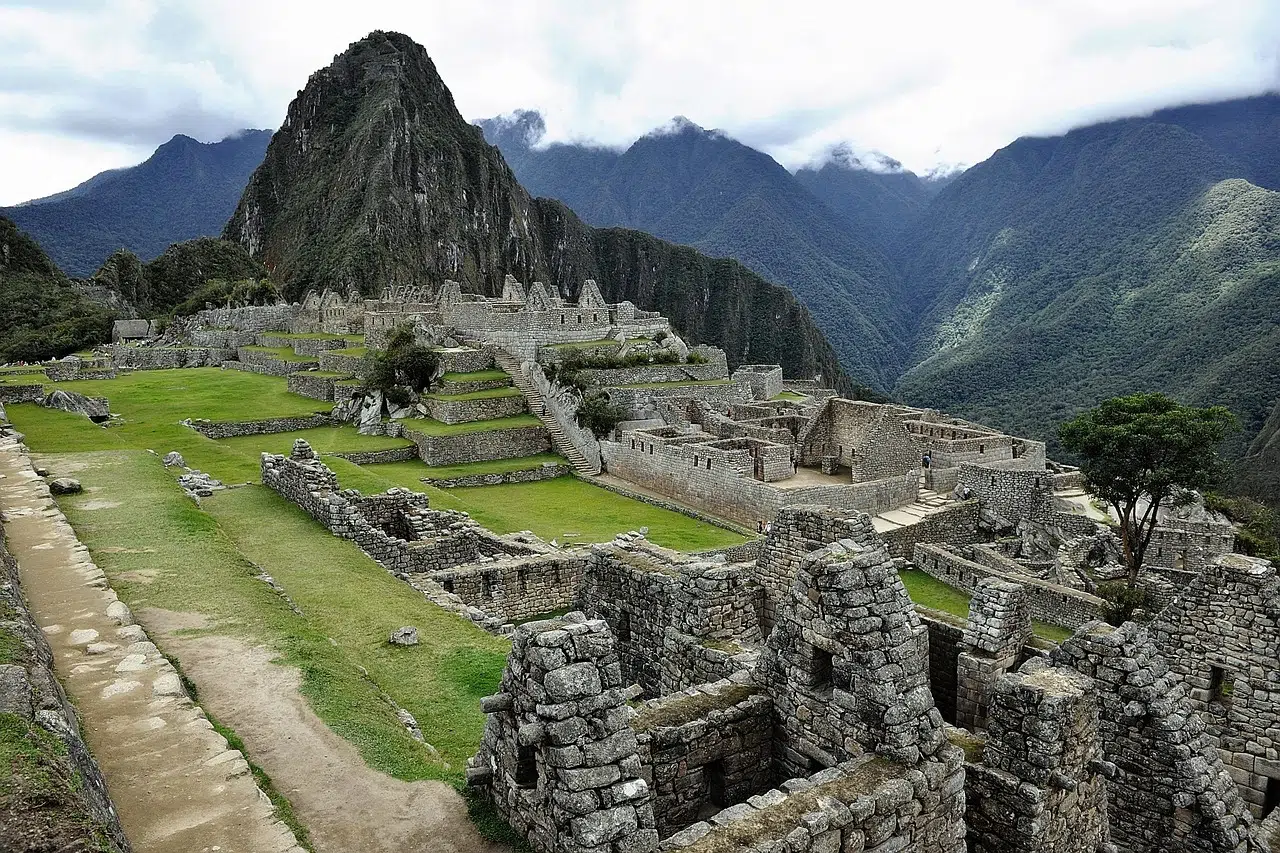When planning a trip to Palcoyo Mountain, packing the right essentials can make all the difference for a safe, comfortable, and enjoyable experience. Palcoyo’s high-altitude location and varying weather conditions require specific clothing, gear, and supplies to keep you well-prepared. Here’s a complete packing guide to ensure you have everything you need for a successful trek.
Table of Contents
Clothing for Changing Weather Conditions
The weather at Palcoyo Mountain can shift rapidly, and it’s essential to dress in layers that can adapt to both cold, windy conditions and sunny spells.
- Base Layers: Synthetic or merino wool options are ideal, as they help regulate temperature and reduce odors.
- Insulating Layers: Bring a fleece or lightweight down jacket for warmth. Temperatures can drop significantly at high altitudes, so an insulating layer is key.
- Outer Shell: A windproof and waterproof jacket protects against unexpected rain or strong winds on the trail.
- Trekking Pants: Comfortable, quick-dry pants are ideal for the trail. Some prefer convertible pants for adaptability.
- Accessories: Don’t forget a warm hat, gloves, and a neck gaiter or scarf, especially in cooler months. Sunglasses with UV protection and a wide-brimmed hat are also essential to protect against the strong mountain sun.
- Hiking Boots: Sturdy, waterproof hiking boots with ankle support are crucial for navigating the sometimes rocky and uneven terrain of Palcoyo.
You can also read:
- The Ultimate Guide to Rainbow Mountain Cusco, Peru: Everything You Need to Know
- Waqrapukara Cusco: The Complete Guide to Peru’s Hidden Inca Fortress
- Palcoyo Cusco: The Complete Guide to the Alternative Rainbow Mountain
- The Ultimate Guide to Humantay Lake Cusco: Everything You Need to Know for Your Adventure

Must-Have Gear for a Day Trip to Palcoyo
Packing the right gear enhances your comfort and safety, allowing you to focus on the beauty of the surroundings.
- Backpack: A small, comfortable daypack (15-20 liters) is perfect for carrying essentials without weighing you down.
- Water Bottle or Hydration System: Staying hydrated is essential, especially at high altitudes. A 1-2 liter water bottle or hydration bladder works well.
- Trekking Poles: These can be invaluable for added stability on uneven paths and can help ease strain on your knees during inclines and descents.
- Sunscreen and Lip Balm: The sun is intense at high altitudes, so bring a high SPF sunscreen and lip balm to protect your skin.
- First Aid Kit: Altitude sickness tablets can also be helpful if you’re prone to altitude discomfort.
- Portable Charger: A portable power bank is useful if you’re relying on your phone for photos or navigation.
- Emergency Blanket: Small and lightweight, an emergency blanket provides extra warmth if needed.
Food and Snacks for Energy
Trekking at high altitudes requires more energy, so bring lightweight, nutritious snacks that will keep you fueled throughout the hike.
- High-Energy Snacks: Granola bars, dried fruits, nuts, and dark chocolate provide quick energy boosts without taking up much space.
- Packed Lunch: If you’re on an independent trek, consider packing a simple sandwich or wrap for a lunch break. Most guided tours provide a lunch, but it’s worth confirming ahead of time.
- Electrolytes: Dehydration is more common at high altitudes, so bring electrolyte tablets or powders to add to your water and maintain balanced hydration.

Optional Items for a More Comfortable Trek
These items aren’t essential but can greatly enhance your comfort and convenience during the trek.
- Camera or Smartphone: The colorful landscapes at Palcoyo are incredibly photogenic, so be sure to bring a camera or phone to capture the stunning scenery.
- Compact Binoculars: Spotting wildlife, such as llamas and alpacas, is common on the Palcoyo trek, and binoculars allow you to observe them from a respectful distance.
- Small Towel or Wet Wipes: If you need to freshen up during or after the trek, a small towel or travel-friendly wipes are helpful.
- Reusable Bags: Bring a reusable bag for any trash, so you can leave the trail as pristine as you found it. Some travelers also use these bags to store muddy boots after the hike.
- Hand Warmers: In cooler months, small, disposable hand warmers can provide a nice burst of warmth if temperatures dip.
Packing List for the Palcoyo Mountain Trek – Experience
The Packing Mistake That Almost Ruined My Trip
The moment still haunts me: standing awestruck before Palcoyo’s Stone Forest, my fingers turning numb as I fumbled with my camera. Those rainbow-striped peaks and curious alpacas deserved better than my shivering, glove-less hands. That’s when I learned the Andes don’t forgive packing mistakes.
Through three challenging treks to Palcoyo – each teaching me brutal new lessons about altitude and weather – I’ve refined the ultimate packing strategy. This isn’t just a list; it’s battle-tested survival knowledge from my failures and local guides’ wisdom. Whether you’re facing Palcoyo’s icy dawns or scorching midday sun, these essentials will keep you comfortable and safe in one of Peru’s most breathtaking yet demanding landscapes.
Why trust this list? Because I’ve:
- Endured frozen fingers at sunrise
- Survived altitude headaches without proper meds
- Learned from Quechua guides’ generations of mountain wisdom
Now let’s make sure your only challenge is deciding which rainbow mountain to photograph first.
1. The Golden Rule: Layer Like an Onion
Why Layers Matter
At Palcoyo’s altitude (4,900m / 16,076ft), temperatures swing from -5°C (23°F) at dawn to 15°C (59°F) by midday—sometimes within minutes.
Essential Layers
- Base layer: Moisture-wicking top (avoid cotton—it traps sweat and chills you).
- Mid-layer: Fleece or lightweight down jacket for insulation.
- Outer shell: Waterproof/windproof jacket (even in dry season—Andean storms strike fast).
My mistake: On my first hike, I wore a heavy parka and overheated on the ascent, then froze at the summit.
2. Footwear: Don’t Skimp on Support
Hiking Boots
- Ankle support is non-negotiable—trails are rocky and can be slippery, especially in wet season.
- Waterproofing: Critical if hiking November–April (mud is relentless).
Camp Shoes
- Lightweight sandals (e.g., Tevas) for post-hike comfort.
Pro tip: Break in boots before the trek—blisters at altitude are torture.
3. Altitude Survival Kit
Must-Haves
- Coca leaves or candies: Chew them slowly to combat nausea (locals swear by them more than Diamox).
- Electrolyte tablets: Combat dehydration from heavy breathing in thin air.
- Portable oxygen canister: Tours often provide these, but DIY hikers should carry one.
Local hack: Guides recommend chlorophyll drops (sold in Cusco markets) to boost red blood cells naturally.
4. Sun Protection: The Andes Doesn’t Play Nice
UV Defense
- SPF 50+ sunscreen: At 4,900m, UV rays are 40% stronger than at sea level.
- Sunglasses with UV400 rating: Snow glare + high-altitude sun can cause temporary blindness.
- Wide-brim hat: Protects neck and face (I learned this after a brutal sunburn).
5. Backpack Essentials
Daypack (20–30L)
- Hydration: 2–3L water bladder (easier to sip while hiking than bottles).
- Snacks: High-energy foods like nuts, chocolate, or quinoa bars.
- First-aid kit: Band-aids, painkillers, and altitude pills (sorojchi pills sold in Cusco).
Pro tip: Pack biodegradable wet wipes—there are no showers on the trail.
6. Photography Gear: Capturing the Colors
Essentials
- Lightweight camera or smartphone: DSLRs are overkill unless you’re a pro.
- Polarizing filter: Enhances color saturation of the mineral stripes.
- Extra batteries: Cold drains power fast—keep spares in your inner pockets.
My regret: Not bringing a mini tripod for stable sunrise shots at the Stone Forest.
7. What Not to Bring
- Jeans or cotton shirts: They absorb sweat and freeze you at altitude.
- Hairdryer/straightener: (Yes, I saw someone try this. The lodges have no outlets.).
- Excessive cash: Only small soles for toilets (10 soles) and tip.
8. Seasonal Adjustments
Dry Season (May–Oct)
- Add thermal gloves and a beanie for frosty mornings.
Wet Season (Nov–Apr)
- Waterproof pants and gaiters to keep mud out of boots.
Conclusion
Packing appropriately for the Palcoyo Mountain Trek is crucial for ensuring a safe and enjoyable experience in this stunning part of Peru. By preparing for changing weather conditions with suitable clothing, equipping yourself with essential gear, maintaining energy levels with snacks and hydration, and considering optional items for comfort, you’ll be well-prepared to enjoy this unique trekking adventure.
Whether you’re drawn by the vibrant colors of Palcoyo or the chance to explore less-traveled paths in the Andes, being prepared will enhance your journey through this breathtaking landscape!



